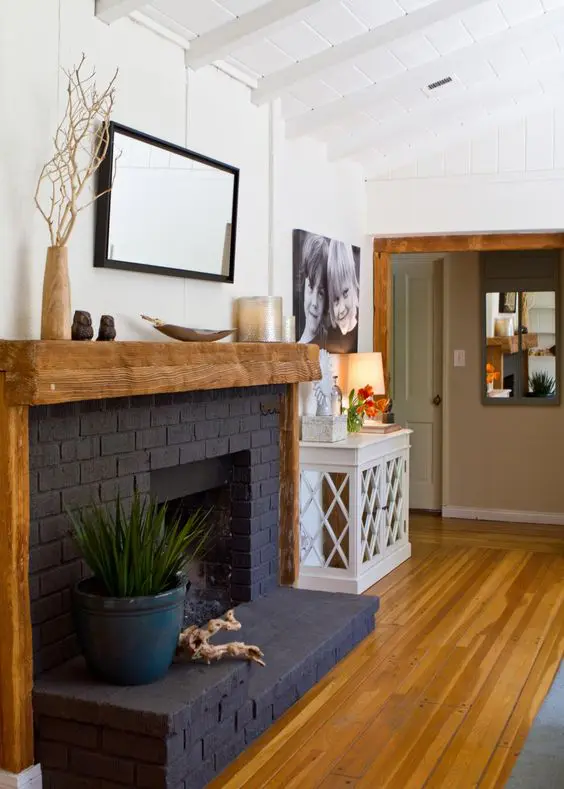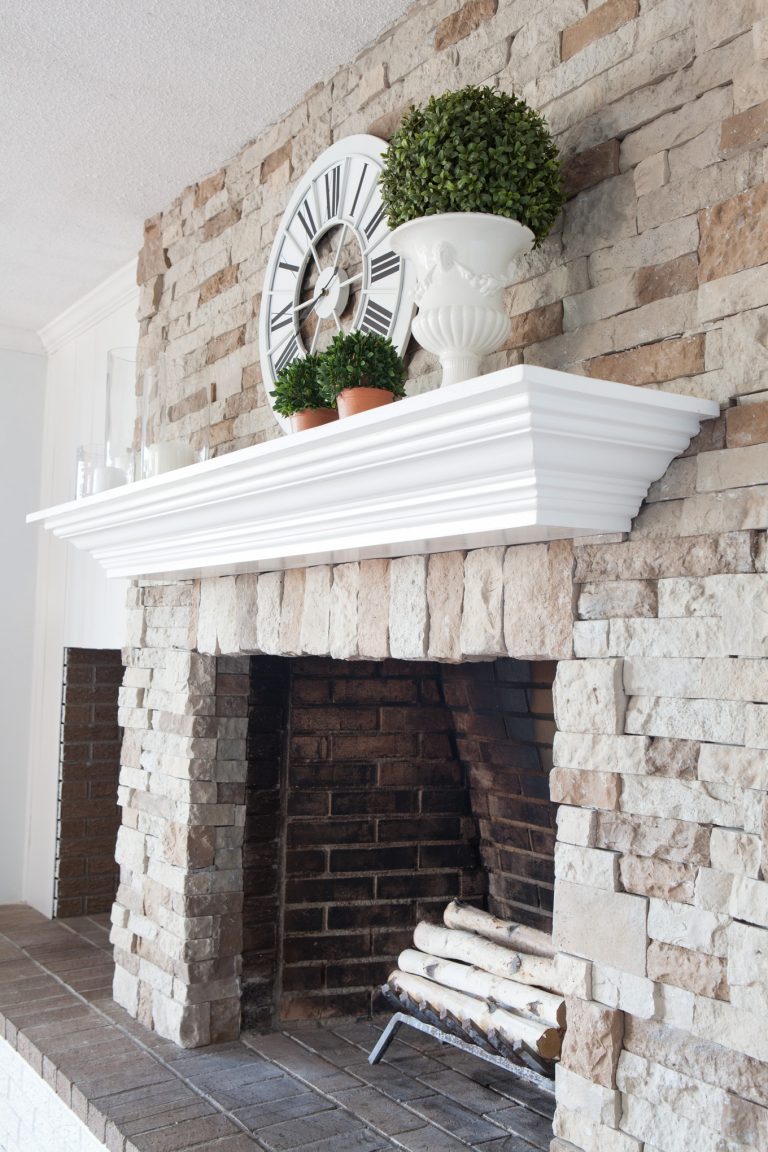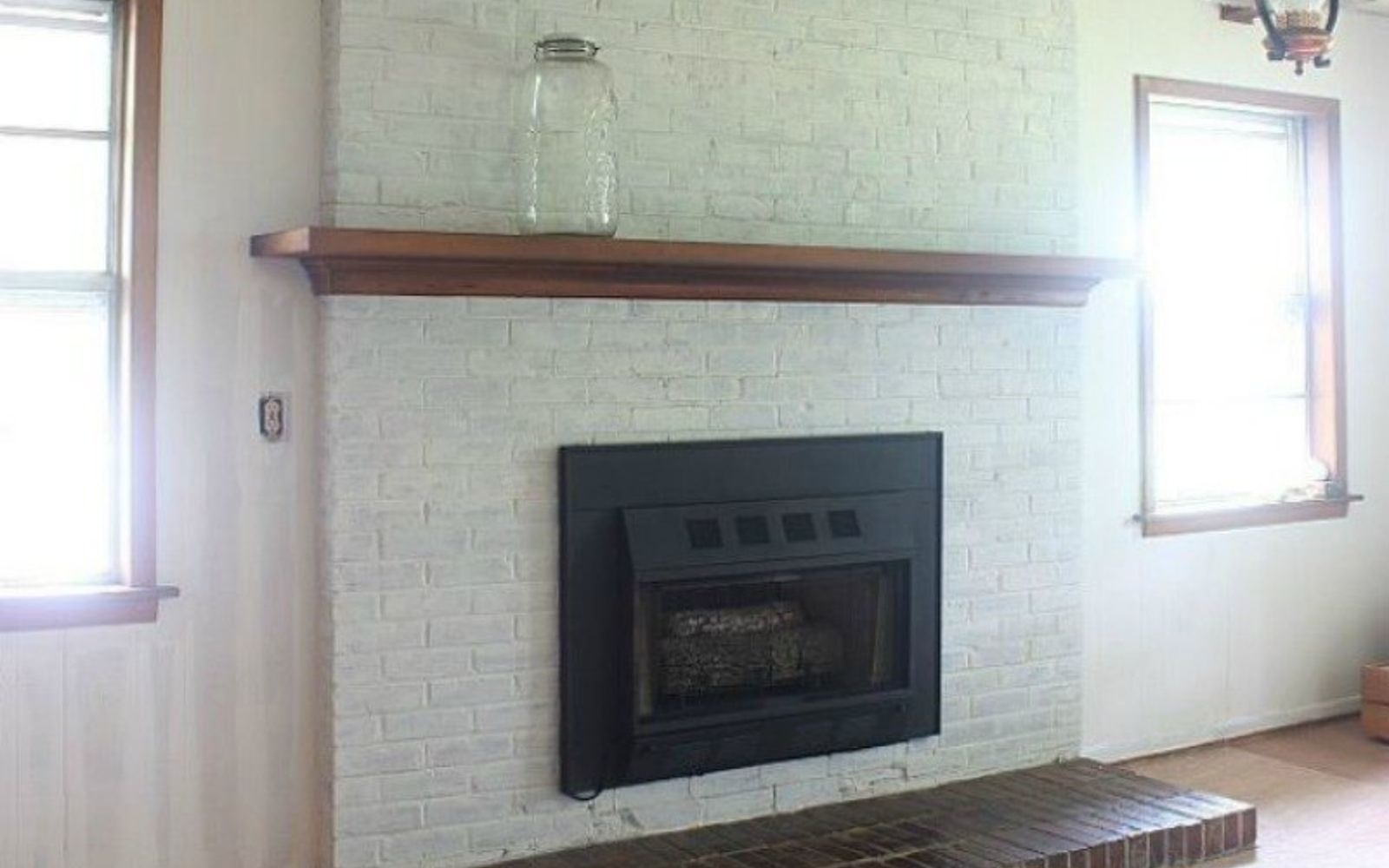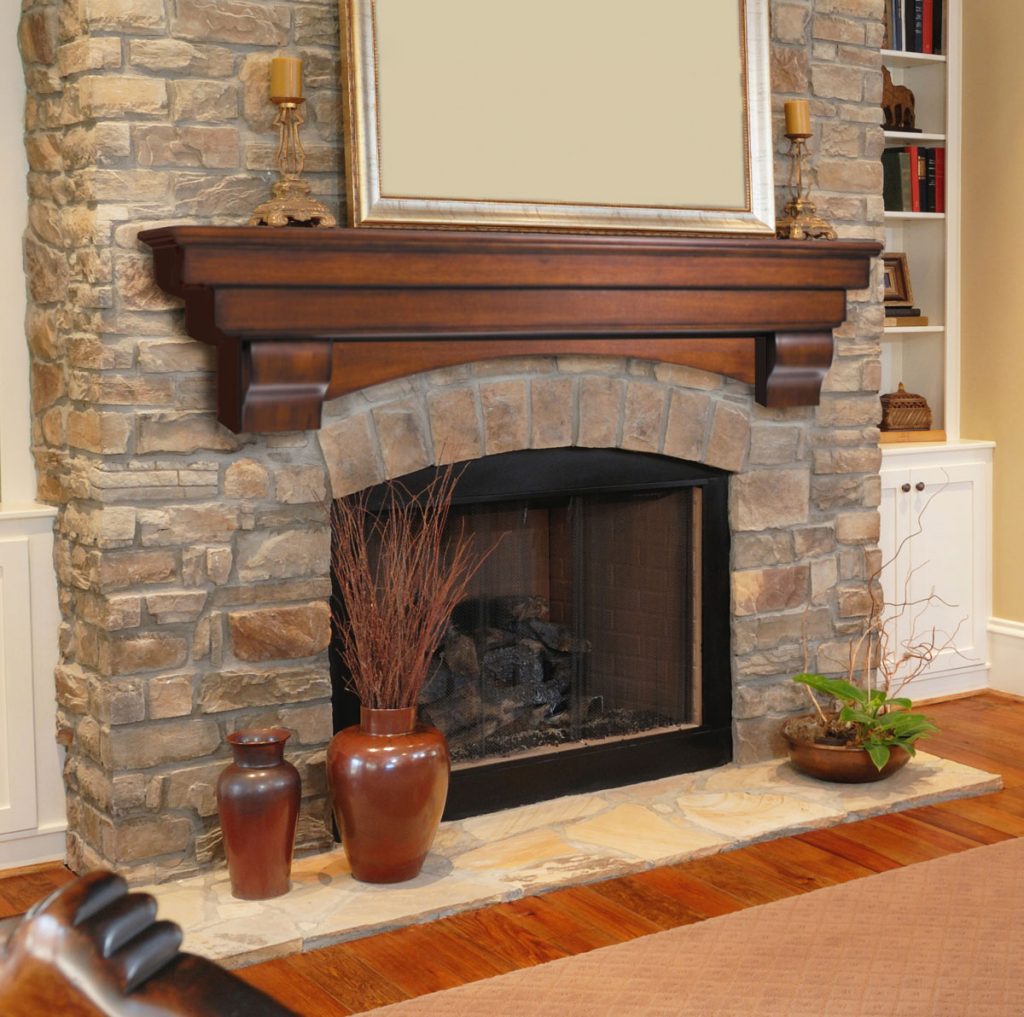Understanding the Basics of Brick Fireplace Renovation
Renovating a brick fireplace can transform a room’s entire look, providing both aesthetic appeal and functional benefits. Before diving into the renovation process, it’s essential to grasp the foundational aspects. A brick fireplace serves as a focal point in any room, and its condition can significantly influence the room’s overall ambiance. Recognizing the need for renovation often stems from signs of wear and tear, outdated designs, or the desire for a style change.
The first step in understanding brick fireplace renovation is assessing the current state of your fireplace. Look for structural damages such as cracks, loose bricks, or crumbling mortar. These issues need immediate attention as they can pose safety risks. Additionally, an outdated design may not blend well with modern decor trends, making a renovation necessary to achieve a cohesive interior style. The extent of the renovation will depend on whether you aim for a complete overhaul or a simple cosmetic update.
Material selection plays a crucial role in the renovation process. Traditional red bricks offer a classic look, but options like painted bricks or stone veneers can provide a modern twist. Each material comes with its own set of benefits and drawbacks in terms of durability, cost, and maintenance. Understanding these aspects helps in making an informed decision that aligns with your aesthetic goals and budget constraints.

Planning is another vital component. Detailed planning includes deciding on the design, setting a budget, and creating a timeline. Proper planning ensures that the renovation process runs smoothly without unexpected delays or cost overruns. Consulting with a professional can provide valuable insights and help avoid common pitfalls associated with DIY renovations.
Safety should never be overlooked. Renovating a fireplace involves handling potentially hazardous materials and tools. Ensuring proper ventilation, using the right protective gear, and following safety protocols are paramount. If structural changes are involved, consulting with a structural engineer can prevent compromising the fireplace’s integrity.
Lastly, consider the functionality of your fireplace post-renovation. A fireplace is not just a decorative element but a source of warmth. Ensure that the renovation enhances its efficiency and meets your heating needs. Incorporating energy-efficient designs or inserts can improve performance while reducing energy costs.

Choosing the Right Materials for Renovation
Selecting the appropriate materials for your brick fireplace renovation is crucial for achieving both aesthetic appeal and longevity. The choice of materials can significantly impact the final look and maintenance requirements of your fireplace.
Traditional red bricks are a popular choice for those who prefer a classic and timeless look. They are durable and can withstand high temperatures, making them ideal for fireplace construction. However, red bricks may require regular maintenance to keep them looking fresh, especially if they are exposed to soot and smoke.
For a more contemporary appearance, painted bricks offer a versatile option. Painting bricks can instantly update the look of your fireplace, allowing you to match it with your room’s color scheme. High-heat-resistant paint is necessary to ensure safety and durability. The downside is that painted bricks may require periodic touch-ups to maintain their appearance.
Stone veneers are another attractive option, providing a natural and rustic look. They come in various textures and colors, allowing for a customized design. Stone veneers are generally more expensive than bricks but offer a unique aesthetic that can enhance the overall ambiance of the room. They also require less maintenance compared to traditional bricks.

Tile is an excellent material for those looking to add a decorative element to their fireplace. Tiles come in a wide range of designs, colors, and materials, including ceramic, porcelain, and glass. They can be used to create intricate patterns or a sleek, modern look. Tiles are relatively easy to clean and maintain but may not be suitable for the entire fireplace structure due to their heat resistance limitations.
Reclaimed materials, such as salvaged bricks or stones, provide an eco-friendly and cost-effective option. These materials bring a sense of history and character to the fireplace. However, sourcing and working with reclaimed materials can be challenging, requiring careful selection to ensure they are structurally sound and aesthetically pleasing.
Finally, considering a combination of materials can create a unique and personalized fireplace design. For instance, combining brick with a stone mantel or tile accents can add depth and interest to the fireplace. This approach allows for creativity and can result in a one-of-a-kind feature that stands out in your home.

DIY vs. Professional Renovation: Weighing the Pros and Cons
When renovating a brick fireplace, one critical decision is whether to undertake the project yourself or hire a professional. Each option has its advantages and disadvantages, and the best choice depends on factors such as your skill level, budget, and the complexity of the renovation.
Opting for a DIY renovation can be highly rewarding, offering a sense of accomplishment and the opportunity to personalize your project fully. For those with basic handyman skills, tasks such as cleaning, painting, or applying a tile surface can be manageable. DIY projects can also be more cost-effective, as labor costs are a significant portion of professional fees. Additionally, a DIY approach allows for flexibility in design changes and pacing the work according to your schedule.
However, DIY renovations come with challenges. Lack of experience can lead to mistakes, which might compromise the safety and functionality of the fireplace. Structural changes, such as repairing damaged bricks or modifying the chimney, require a deep understanding of construction principles and local building codes. Without this knowledge, you risk causing more harm than good. Furthermore, the tools and materials needed for a professional finish may not be readily available to a DIYer, potentially leading to subpar results.

Hiring a professional ensures that the job is done correctly and efficiently. Professionals bring expertise, ensuring that all aspects of the renovation, from design to execution, meet safety standards and aesthetic expectations. They have access to specialized tools and materials, which can result in a higher quality finish. Professionals can also handle unexpected issues that may arise during the renovation process, providing peace of mind.
The downside to hiring a professional is the cost. Professional services can be expensive, particularly for extensive renovations. It’s essential to get multiple quotes and check references to ensure you’re getting value for your money. Additionally, working with a professional means less control over the project timeline and design specifics. Clear communication is crucial to ensure your vision is accurately realized.
For those unsure about a full DIY approach, a hybrid method can be a viable solution. This involves undertaking simpler tasks yourself, such as painting or tiling, while leaving more complex aspects, like structural repairs or chimney work, to professionals. This approach can help manage costs while ensuring critical components are handled by experts.
Ultimately, the decision between DIY and professional renovation depends on your confidence in your abilities, the scope of the project, and your budget. Careful consideration of these factors will help you choose the best path for a successful fireplace renovation.

Related Articles:
- Red Brick Fireplace Mantel
- Brick Fireplace Patio
- Faux Paint Brick Fireplace
- Replace Brick Fireplace
- How to Clean Red Brick Fireplace

Step-by-Step Guide to Renovating a Brick Fireplace
A well-executed renovation project requires a clear and organized approach. Breaking down the process into manageable steps ensures a smooth progression from start to finish.
Step 1: Preparation
Before starting, gather all necessary materials and tools. This includes safety gear like gloves, goggles, and masks, as well as tools such as hammers, chisels, wire brushes, and paint supplies. Ensure the work area is well-ventilated, and cover surrounding furniture and floors to protect them from dust and debris.
Step 2: Cleaning
The first practical step is thoroughly cleaning the fireplace. Remove any soot, dirt, or debris using a wire brush and a vacuum. For stubborn stains, a mixture of water and mild detergent or a commercial brick cleaner can be used. Cleaning ensures that new materials adhere properly and provides a clear view of any underlying damage.
Step 3: Repairing
Inspect the bricks and mortar for any damage. Cracks or loose bricks need to be repaired to maintain the fireplace’s structural integrity. Use a chisel and hammer to remove damaged mortar and replace it with fresh mortar. Allow the mortar to cure completely before proceeding to the next step. If bricks are severely damaged, consider replacing them entirely.

Step 4: Designing
Decide on the new look for your fireplace. This could involve painting, applying a new veneer, or installing tiles. Sketch out your design and gather all necessary materials. This step is crucial for ensuring that you have a clear vision and all the required supplies before starting the transformation.
Step 5: Applying New Materials
Depending on your chosen design, this step will vary. For painting, use a high-heat resistant paint and apply it evenly with brushes or rollers. If installing a stone veneer or tile, follow the manufacturer’s instructions for adhesive application and placement. Ensure that each piece is securely attached and aligned properly.
Step 6: Finishing Touches
Once the new materials are in place and the adhesive or paint has dried, add any finishing touches. This could include installing a new mantel, adding decorative elements, or enhancing the surrounding area with complementary decor. Clean up the work area, remove protective coverings, and admire your renovated fireplace.

Maintaining Your Renovated Brick Fireplace
Proper maintenance is key to preserving the beauty and functionality of your renovated brick fireplace. Regular upkeep can prevent minor issues from becoming major problems and extend the life of your fireplace.
Routine Cleaning
Regularly clean the fireplace to prevent the buildup of soot, dust, and debris. Use a soft brush to remove surface dirt and a vacuum to clean the surrounding area. For deeper cleaning, use a mild detergent and water, avoiding harsh chemicals that can damage the bricks or new finishes. Keeping the fireplace clean enhances its appearance and prevents soot buildup from becoming a fire hazard.
Inspecting for Damage
Periodically inspect the fireplace for signs of damage. Look for cracks in the bricks or mortar, loose tiles, or discoloration that could indicate water damage. Early detection of issues allows for timely repairs, preventing more extensive and costly damage. Addressing minor repairs promptly ensures the structural integrity of the fireplace remains intact.
Seasonal Maintenance
Perform seasonal maintenance to prepare the fireplace for different weather conditions. Before winter, ensure the chimney is clear of obstructions and the damper is functioning correctly. During the summer, when the fireplace is less frequently used, take the opportunity to conduct a thorough inspection and perform any necessary repairs.
Professional Inspections
Schedule regular professional inspections to complement your maintenance efforts. A professional can identify potential issues that may not be visible during routine checks. Annual inspections are recommended to ensure the fireplace and chimney meet safety standards and are in good working condition.
Sealing and Waterproofing
Consider sealing or waterproofing the bricks to protect against moisture damage. Moisture can cause bricks to deteriorate over time, leading to structural issues. Applying a brick sealer can help prevent water penetration and extend the life of your fireplace. Ensure the sealer used is appropriate for high-heat areas.
Enhancing Efficiency
To maintain the efficiency of your fireplace, ensure it operates correctly. If you’ve installed an insert or other energy-efficient features, follow the manufacturer’s maintenance guidelines. Properly maintaining these components ensures optimal performance and energy savings.

Common Mistakes to Avoid During Fireplace Renovation
Renovating a brick fireplace can be a rewarding project, but it’s essential to avoid common mistakes that can lead to complications and additional costs. Being aware of these pitfalls can help ensure a successful renovation.
Skipping Proper Preparation
One of the most frequent mistakes is neglecting thorough preparation. Failing to clean the fireplace properly or overlooking necessary repairs before starting the renovation can result in poor adhesion of new materials and an unprofessional finish. Take the time to prepare the fireplace adequately, including cleaning, repairing, and planning your design.
Ignoring Safety Measures
Safety should always be a priority. Renovating a fireplace involves handling tools and materials that can pose risks if not used correctly. Always wear appropriate protective gear, ensure the work area is well-ventilated, and follow safety protocols, especially when dealing with potentially hazardous materials like paint or adhesive.
Using Inappropriate Materials
Choosing the wrong materials for your renovation can lead to unsatisfactory results and potential safety hazards. Ensure that all materials, including paint, mortar, and veneers, are suitable for high-heat environments. Using inappropriate materials can result in damage or even fire hazards.
Overlooking Structural Issues
Aesthetic upgrades are important, but overlooking structural issues can compromise the safety and functionality of your fireplace. Always address any structural damages, such as cracked bricks or deteriorating mortar, before proceeding with cosmetic enhancements. Consulting with a professional for structural repairs is often necessary.
Poor Design Planning
A lack of clear design planning can lead to mismatched elements and an incohesive final look. Take the time to plan your design thoroughly, considering how the renovated fireplace will fit into the overall room decor. Sketch out your ideas and make sure all materials and colors complement each other before starting the renovation.
Rushing the Process
Renovation projects require patience and attention to detail. Rushing through steps, such as allowing insufficient drying time for paint or adhesive, can lead to subpar results and additional work. Follow the recommended timelines for each stage of the renovation process to ensure a high-quality finish.

What is the best way to clean a brick fireplace before renovation?
Cleaning a brick fireplace involves removing soot, dirt, and debris to ensure a smooth surface for new materials. Start with a dry brush to remove loose dirt, then use a vacuum to clean up the debris. For stubborn stains, a mixture of water and mild detergent or a commercial brick cleaner can be effective. Ensure the fireplace is completely dry before proceeding with repairs or new finishes.
Can I paint my brick fireplace, and what type of paint should I use?
Yes, you can paint a brick fireplace. It’s essential to use a high-heat resistant paint designed for fireplaces to withstand the high temperatures. Clean the bricks thoroughly before painting, and apply a primer suitable for masonry surfaces to ensure good adhesion. Follow with at least two coats of high-heat resistant paint for a durable finish.
How do I know if my brick fireplace needs structural repairs?
Signs that your brick fireplace may need structural repairs include visible cracks in the bricks or mortar, loose or missing bricks, and signs of water damage such as discoloration or efflorescence. If you notice any of these issues, it’s crucial to address them before starting any cosmetic renovations. Consulting a professional can provide a thorough assessment and ensure the necessary repairs are correctly completed.
Is it possible to install a stone veneer over an existing brick fireplace?
Installing a stone veneer over an existing brick fireplace is possible and can significantly enhance its appearance. The process involves cleaning the bricks, applying a scratch coat of mortar, and then attaching the stone veneer with adhesive. Ensure the adhesive used is suitable for high-heat applications and follow the manufacturer’s instructions for a secure and durable installation.
What maintenance is required for a painted brick fireplace?
Maintaining a painted brick fireplace involves regular cleaning to prevent soot and dirt buildup. Use a soft brush or cloth to clean the surface and avoid harsh chemicals that could damage the paint. Periodically inspect the paint for chips or cracks and touch up as needed to maintain its appearance. High-quality, high-heat resistant paint can reduce the frequency of touch-ups and extend the life of the finish.

Related Posts:
- Brick Arch Lintel Fireplace
- Cleaning Red Brick Fireplace
- Cover Brick Fireplace with Marble
- Outside Brick Fireplace Designs
- Brick Fireplace Oak Beam
- Painting a Brick Fireplace to Look Like Stone
- TV Mounted Above Brick Fireplace
- Painted Brick Fireplace Makeover
- Brick Fireplace Construction Plans
- Cleaning Bricks Around Fireplace